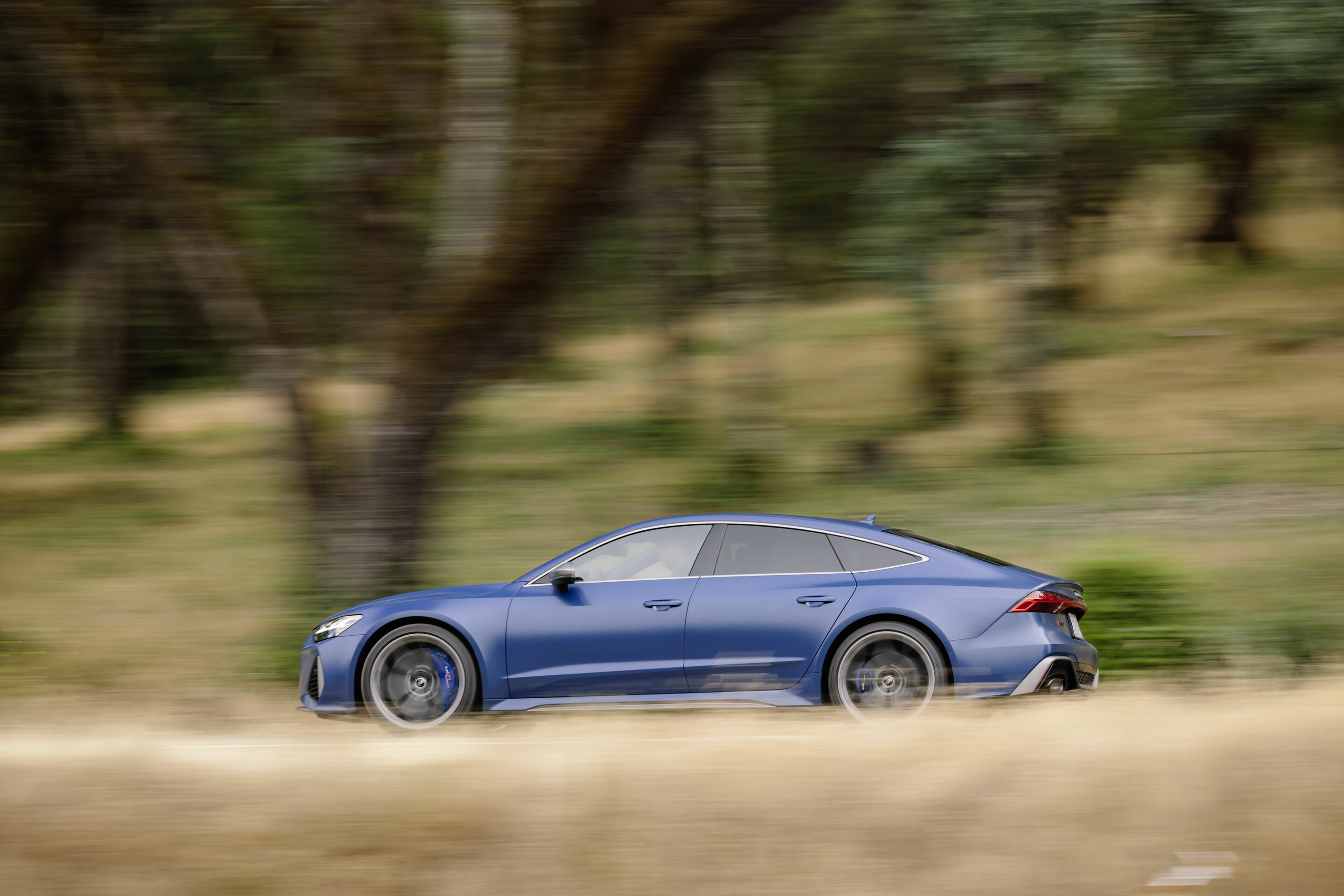Transmission
Back to overviewThe power produced by the 4.0 TFSI is delivered via the standard eight-speed tiptronic transmission with optimized gear changing and a launch control function to the quattro permanent all-wheel drive system. Drive forces are distributed to the front and rear axles in a
40 : 60 ratio via the purely mechanical center differential. In the event of slip, more drive torque automatically goes to the axle with the better traction. Up to 70 percent can be directed to the front wheels and up to 85 percent to the rear wheels.
Wheel-selective torque control, a software system that operates on all kinds of road surfaces, optimizes the agile and confident handling of the RS 7 Sportback and RS 7 Sportback performance. It electronically applies the brakes to the wheels in a gentle manner on the inside of the bend before they can begin to slip. The difference in drive forces turns the car into the bend, allowing the car to follow the steering angle precisely. The result: precise, agile, and neutral handling.
In the optional RS dynamic package and RS dynamic package plus, Audi combines wheel-selective torque control with the quattro sport differential. It distributes the drive torque between the rear wheels as needed during dynamic cornering, thereby improving handling, traction, and stability. A superposition gear comprising two sun gears and an internal gear was mounted on the left and the right of a conventional rear differential. It turns 10 percent faster than the drive shaft.
A multi-plate clutch in an oil bath and operated by an electrohydraulic actuator provides the power connection between the shaft and the superposition gear. When the clutch closes, it steplessly forces the higher speed of the superposition stage on the gear. Being forced to turn faster results in the additional torque required being drawn off from the opposing wheel on the inside of the curve via the differential. In this way nearly all of the torque can be directed to one wheel.
The sport differential can distribute the torque between the left and right rear wheels in all operating states, including while decelerating. When turning or accelerating in a curve, they are predominantly steered toward the wheel on the outside of the curve – the car is literally pressed into the curve, eliminating even the slightest hint of understeer. In case of oversteer, the sport differential stabilizes the vehicle by shifting torque to the wheel on the inside of the curve.
In the RS 7 Sportback and the RS 7 Sportback performance, the sport differential is controlled from the electronic chassis platform. The software for the sport differential constantly computes the distribution of torque at the rear axle that is ideal for driving dynamics. This takes into account the steering angle, yaw rate, lateral acceleration and driving speed. Networking with Audi drive select allows the driver to influence how the system works.
RS Dynamic Package as standard
The RS Dynamic Package is standard equipment in the RS 7 performance. This includes the increase in top speed to 280 km/h (174 mph), dynamic all-wheel steering (the RS-specific software update helps the driver with active steering corrections on the front and rear axles), and the quattro sport differential on the rear axle.
The RS Dynamics Package plus is also available as an option, which in addition to the RS Dynamics Package, raises the top speed to 305 km/h (189.5 mph) and includes an RS ceramic brake system. Customers can order the calipers in gray, red, or blue and discs measure 440 mm (17.3 in) at the front and 370 mm (14.6 in) at the rear. The RS ceramic brake system weights a total of approx. 34 kg (75.0 lbs) less than its steel counterpart for a reduction of the unsprung mass.
New self-locking center differential in the Audi RS 7 Sportback performance
Power from the 4.0 TFSI engine flows through a standard eight-speed tiptronic with faster shift times to the permanent all-wheel drive quattro. The strictly mechanical center differential distributes engine power to the rear axle at ratio of 40 : 60 and if wheelspin occurs, more drive torque is automatically applied to the axle with better traction – up to 70 percent can flow to the front axle and up to 85 percent to the rear axle. The self-locking center differential is lighter and more compact, improving driving dynamics plus offering noticeably more precise cornering which makes for less understeer at the handling limits. As an added improvement, the self-steering response is more exact with passengers benefitting from a more agile driving experience overall.
All terms marked in the text are explained in detail in the technology lexicon at www.audi-mediacenter.com/en/technology-lexicon.
The equipment, data and prices specified in this document refer to the model range offered in Germany. Subject to change without notice; errors and omissions excepted.
